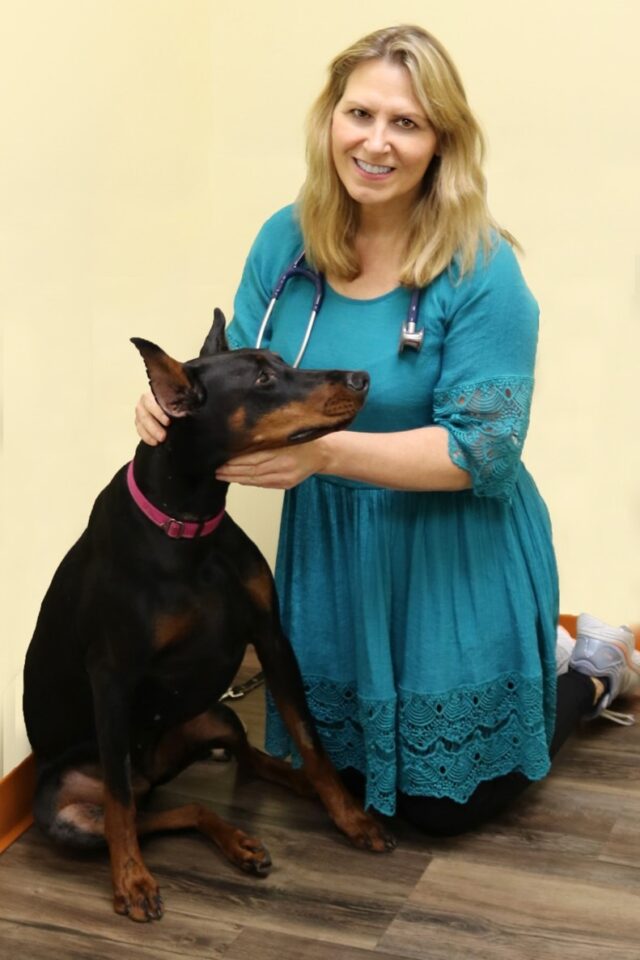Cynthia Maro, DVM, CAC, CVA of Pittsburgh is a veterinarian practicing natural, innovative healing treatments for animals. With experience and advanced training in veterinary acupuncture, rehabilitative therapies in veterinary medicine, and animal spinal manipulative therapies, Dr. Cynthia Maro explains below why she often applies prehabilitative techniques in her practice.
Prehabilitative therapy is rehabilitative therapy’s cousin. While most people have heard of the latter for humans and animals alike, prehabilitation isn’t so widely discussed. However, Dr. Cynthia Maro advocates pre-hab therapy for all pet owners.
The Application of Prehabilitative Therapy for Animals
Pre-hab is based on the idea that before surgery, hands-on treatments like physical therapy exercises (such as underwater treadmills), laser treatments, therapeutic massages, and strength and conditioning exercises can result in better outcomes after the operation.
Depending on the circumstances, it can even prevent the need for surgical intervention entirely, saving owners money and pets from stress.
However, Dr. Cynthia Maro of Pittsburgh takes prehabilitation a step further.
In her practice, pre-hab includes diet, nutraceuticals, nervous system stimulation through acupuncture, and manipulative therapies that help the CNS (central nervous system) maintain muscle and nerve connections. Such treatments and many others allow pets to build muscular strength and condition through the optimization of the nervous system’s signaling abilities.
By implementing the aforementioned treatments prior to surgery, animals won’t suffer extreme muscle atrophy during the disuse of the injured limb. Furthermore, they won’t risk damaging their opposite limb while they favor it, and their recovery from surgical procedures becomes much shorter.
Without Sufficient Pre-Hab, Pets Could Lose Muscle Mass and Strength, Leading to Further Injury
Evidence shows that sedentary pets who lose strength and muscle mass following surgical interventions don’t just lose visible muscle; they also lose mitochondria, the powerhouse of the cells that oxygenate tissues.
Defective mitochondria can’t help with healing or produce energy, leading to animals suffering from profound inflammation while recovering from operations.
While increased inflammation may not seem too terrible at first glance, it’s more likely to result in re-injury throughout recovery. Plus, it could cause slower nerve firings and injury to a different limb.
One such example is in dogs who suffer a cranial cruciate ligament tear — they have an 80% chance of tearing their other leg, even once the initial injury has been repaired via surgical intervention.
Luckily, Dr. Cynthia Maro of Pittsburgh utilizes her profound knowledge and skills developed throughout her 35 years of treating injured dogs, cats, and horses to ensure effective prehab techniques are used to prevent such happenings in her patients.
 Dr. Cynthia Maro Performs Early-Stage X-Rays as Part of Her Preventive Care Practices
Dr. Cynthia Maro Performs Early-Stage X-Rays as Part of Her Preventive Care Practices
The highly regarded Pittsburgh vet uses early-stage X-rays to diagnose dysplasia in felines and canines between 4 and 12 months of age.
If development issues are pictured, Dr. Cynthia Maro moves her pre-hab practice further, prescribing nutrition guidelines alongside at-home and in-office physical therapy. As mentioned, these preventive methods are designed to maximize the animal’s growth potential and correct improper limb or carriage rotation.
Such pre-hab techniques can provide a host of advantages, provided the physical therapy begins during the pet’s early development.
Advising Owners to Seek Veterinary Advice if Gait Appears “Off”
Dr. Cynthia Maro of Pittsburgh encourages owners to seek a veterinary opinion from a vet specializing in hands-on prehab treatments who is a member of the AARV (American Association of Rehabilitative Veterinarians) when their pet shows signs of incorrect movement.
Whether it be a strange way of walking, have difficulty on stairs, or clumsiness when jumping off or on furniture, getting an expert opinion and treatment plan is crucial to the animal’s quality of life. After all, surgical intervention can’t typically correct an incorrectly healed early injury. Therefore, early physical therapy interventions can make a massive difference to their comfort, development, and even life expectancy.
The Powers of Prehabilitative Therapy
Many pets have healed CCL and ACL injuries thanks to nonsurgical methods like chiropractic manipulation, ozone therapy, and platelet-rich plasma. Dr. Cynthia Maro herself notes the fantastic case outcomes of such treatments in pets she and her colleagues have treated.
Orthopedic injuries are unlikely to improve on their own, so pet owners are highly encouraged to seek prehabilitative therapy to ensure their furry friend gets the treatment they need to lead a long and happy life.










